Protein Bars Are Full of Nutrition
By Heide Kennedy, Arizona Farm Bureau Communications Intern
Whenever I have days that are busy and hectic, finding time to go get lunch can be a little bit hard sometimes. Enter protein bars, which are basically a granola bar, but with an extra nutritional punch. If you pick the right ones, these little bars can be a whole meal on their own. Not to mention, they are super convenient, as they are prepackaged, small, and typically don’t need to be refrigerated. Below are a few of the pros of protein bars and some of the important things to look for when choosing a protein bar. 
According to registered dietician Jillian Kubala, protein bars offer quite a few benefits. One of them is that they promote weight loss, as protein is a macronutrient that promotes fullness, helping you to eat less overall. Another benefit is that they improve your nutrient intake because, besides protein, these bars are also full of other nutrients and vitamins. Also, they are incredibly convenient and easy to use as a grab-and-go meal.
When you walk into a grocery store, there are so many different brands and kinds of protein bars to choose from, and of course, each one claims that it’s the best. But it truly comes down to your specific dietary needs and what you’re trying to achieve nutritionally. So, here are a few important things that Kubala says to consider when you’re trying to pick between them.
- Protein content – Most contain at least 10 grams of protein, and some contain more than 30 grams.
- Other nutrient content – Some protein bars also have other ingredients such as nuts, dried fruit, oats, or other grains. This adds extra nutrients such as fiber, fat, and vitamins. Depending on which ingredients are used will make the amount of these nutrients vary also.
- Sugar content – The sugar content in protein bars varies significantly. Some have added sugar, some have artificial sweeteners, some are sweetened with dried fruit, and others have none at all. Always check the sugar content, especially if you’re trying to stay away from too much sugar.
Keeping a box or two of protein bars in your pantry isn’t a bad idea. They are super convenient, packed with nutrition, and perfect for busy schedules. Just make sure that they aren’t full of added sugar and that they have the right amount of protein and nutrients that you need and you’ve got a perfect little meal or snack!
For more articles about healthy snacking, check out the Fill Your Plate blog!
9 Realistic Tips for Healthy Living
By Heide Kennedy, Arizona Farm Bureau Communications Intern
Many of us think or talk about how we are going to start eating more healthfully or start living more healthfully in general. While these are great goals to have, let’s be honest. There is really no true definition to either of them, as everyone’s health and dietary needs can vary drastically depending on each individual’s needs. 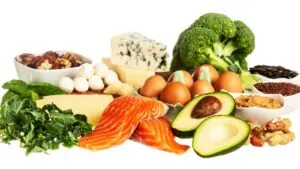
So, when you read some articles about how you should “eat healthy” by cutting out all carbs, or by fasting for certain periods of the day, understand that while these methods might work for some, they don’t always work for everyone. With that being said, there are still some basic healthy eating tips to get you started in living a healthier lifestyle.
Registered dietician Jaclyn London suggests the following tips for eating healthy, with each one being just a guideline so that you can tailor it to your own personal goals.
- Eat breakfast – This ensures you have an energized start to your day.
- Check your beverages – Drinks are a great hiding place for unnecessary sugars, and it’s easier to overdrink than to overeat, so choose drinks wisely.
- Combine protein and fiber in each meal – Combining these two makes you feel fuller faster as both protein and fiber take longer to digest.
- Eat meals and snacks regularly – Staying regular with eating times helps you to stay energized consistently throughout your day.
- Add fruits and vegetables to each meal – Fruits and vegetables contain lots of the vitamins and minerals that our bodies need to function. Plus, they’re pretty delicious too!
- Pay attention to your body’s needs – Eat when you feel hungry or get some water when you feel thirsty. Your body knows what it needs to function so listen to it!
- Get nutrients from foods more than supplements – While supplements can be a great tool for getting extra vitamins and minerals that we might not be getting in our diets, getting as much of them as we can through our foods is a much better way to keep up on our nutrients.
- Don’t forget to exercise – Staying physically active in some shape or form is essential to good health, as it keeps you strong, flexible, and burns excess calories!
London summarizes what healthy eating truly is by saying it is based on finding the balance of eating good foods that help you to feel your best both physically and psychologically. With that in mind, eating healthy doesn’t have to be that hard or unattainable. Just follow some basic principles and tailor to fit you own goals and needs.
For more articles about healthy eating, recipes for some delicious and nutritious meals, or information on finding fresh, locally grown ingredients, check out the Fill Your Plate website!
What Makes a Food Nutrient-Dense?
By Heide Kennedy, Arizona Farm Bureau Communications Intern
Whenever we read about eating healthfully, we often run into the phrase “Nutrient-dense.” We can easily deduce that the phrase is referring to foods that are full of good nutrients. But just how much nutrient content does a food have to have to make it qualify as being “Nutrient-dense?” 
To put it simply, nutrient-dense foods are those that provide a large number of vitamins and minerals relative to their caloric content. Registered dietician Grace Derocha says that nutrient-dense foods “…Offer vitamins, minerals, antioxidants, water, fiber, and more without adding empty calories.”
Calculating the nutrient density of a food is done by adding points for its content of good nutrients like vitamins and minerals, fiber, and protein. Then, points are taken away for their content of bad nutrients, such as excess sodium and sugar, unhealthy fats, refined carbohydrates, etc. After the points have been determined, they are divided by a unit such as 100 grams or 100 calories to get its nutrient density score.
The following categories of foods all contain nutrient-dense foods, but there are a few standouts within each.
- Vegetables (Asparagus, bell peppers, broccoli, leafy greens, potatoes, pumpkin, sweet potatoes, yams)
- Fruits (Avocados, berries, mango, pomegranates)
- Lean proteins (Salmon, liver, eggs, beef, pork = pretty much all the protein meats)
- Nuts and seeds (Quinoa)
- Legumes
Eating nutrient-dense foods is important so that we can ensure that we are maximizing the amount of -nutrition we get from the foods that we eat. Arizona agriculture produces lots of these nutrient-dense foods! Look for locally grown products next time you’re out grocery shopping!
For more health-related articles, or for more information on where and how to find locally produced foods, check out the Fill Your Plate website!
Bananas – Versatile, Economical, and Nutritious!
By Heide Kennedy, Arizona Farm Bureau Communications Intern
An apple a day keeps the doctor away! But what about bananas? Bananas are an incredibly nutritious fruit that can offer lots of health benefits. Not to mention, bananas are also one of the most economical, versatile fruits, and as a result, are the number one most consumed fruit in the United States! 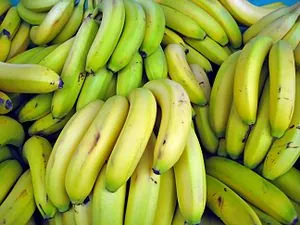
Nutritionally, bananas have a lot to offer. According to registered dietician Elyse Homan, one medium banana has 105 calories, 15 grams of natural sugars, and 3 grams of fiber. Additionally, bananas are an amazing source of vitamins C and B6, potassium, magnesium, and resistant starches.
Registered dieticians Supriya Lal and Allison Thibault list some of the health benefits that come from regularly eating bananas. These include:
- Increased energy – From potassium.
- Better digestion – From the fiber and the resistant starches which act as prebiotics.
- Weight loss support – Resistant starches balance blood sugar and promote fullness, vitamin B6 improves metabolism.
- Immunity support – Vitamin C.
- Blood Sugar Regulation –An important component when dieting.
So, move over apples — well at least add bananas to the mix. Eating more bananas in your diet can also help to keep you healthy as well! Dieticians suggest that you consume no more than 1-2 bananas per day. This allows you to enjoy all of their benefits without overdoing it. They also suggest that you pair them with a protein source to help create a balanced snack.
Pick up some bananas the next time that you’re out grocery shopping! They sure do provide a lot of nutritional bang for your buck!
For more health-related articles, or for some yummy recipes that feature bananas, check out the Fill Your Plate website!
What Makes Superfoods So Super?
Heide Kennedy, Arizona Farm Bureau Communications Intern
We often hear a lot about “superfoods” and how they are incredibly nutritious and good for your health. But what exactly makes a food a superfood? Read on to find out what makes foods able to be considered a superfood, some examples of superfoods, and a few ideas on how to incorporate them into your diet!
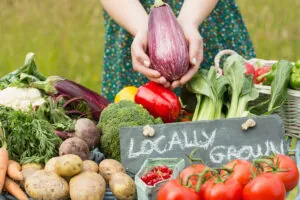
According to the Cleveland Clinic, there is no specific, hard, and fast definition for superfoods, but the term is typically used to denote natural foods that are exceptionally nutrient dense all while being relatively low in calories. Registered dietician Beth Czerwony says that superfoods are very high in vitamins, antioxidants, and minerals, and they also might be high in fiber, flavonoids, and healthy fats.
There are tons of examples of foods that are considered superfoods, and the following are some dietician-recommended superfoods.
- Flax seeds
- Chia seeds
- Watercress
- Walnuts
- Blueberries
- Kale
- Yogurt
- Eggs
- Oats
- Beans
- Quinoa
- Sea vegetables
- Cabbage
- Alaskan sablefish
When it comes to incorporating some of these superfoods into your diet, some you can just use as part of a meal or all by themselves, or others you can add to recipes to give it more of a nutritional punch. For example, you could make a salad using kale as the greens, or you could add some kale to a smoothie, you’re still getting the extra vitamins and minerals either way!
Want to read more about healthy eating? Check out the Fill Your Plate blog!
Consume Healthy Carbohydrates
By Heide Kennedy, Arizona Farm Bureau Communications Intern
Out of all three macronutrients that we need to fuel our bodies, carbohydrates are often the one that are the most looked down on. Whether it be because they can cause a spike in blood sugar levels and glucose, or because they can cause weight gain, they get quite the bad rap. But registered dietician Cynthia Sass says that eating the right kinds of carbs in a well-balanced diet can actually be quite healthful. When correctly chosen the carbs that we eat can provide our bodies with so many important vitamins and minerals, fiber, and antioxidants. 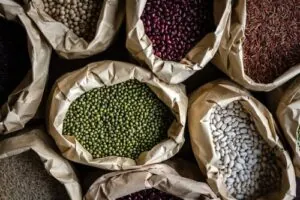
The following are her suggestions on some very healthy carb sources to consider adding to your diet.
- Brown rice
- Beans
- Whole fruits
- Pure maple syrup (as a refined sugar alternative)
- Millet
- Oats
- Quinoa
- Potatoes
- Sweet potatoes
- Vegetables
As you might have noticed, all of these carbohydrate-rich foods are all whole and unrefined. Refined carbohydrates such as white flour, white rice, refined sugar, and others, have all been stripped of their nutritional value during processing. So, to reap the most nutrition and health benefits from the carbs you consume, it’s important to choose only those that are unrefined and whole.
Arizona agriculture grows and produces lots of healthy carb sources! Check out the Fill Your Plate website for more information on where and how you can locate locally grown foods!
A Closer Look at Plant-Based Food Options
By Heide Kennedy, Arizona Farm Bureau Communications Intern
When you look around at the grocery store shelves or even at menus at a local restaurant, there are becoming more and more plant-based alternatives for many different foods. These plant-based options are often marketed as being healthier, and some might actually be a little bit healthier. But these alternatives are also a great hiding place for extra added ingredients that might not be so good for you. Below are some popular plant-based alternative foods and what to watch for when choosing these products. 
Plant-based creamers
Nutritionist Josephine Connolly-Schoonen says that plant-based creamers made from oats, almonds, coconuts, and more are relatively equal to regular half-and-half in terms of calorie and fat content. However, many plant-based creamers have added sugars, whereas half-and-half is naturally sugar-free.
Grain-free products
Grain-free products such as tortillas, chips, cereal, and granola may seem like they’re healthier, but unless you’re adhering to a diet that restricts grain intake such as paleo, there is no reason to avoid whole grains. Registered dietician Amy Keating says that including whole grains in your diet is great for reducing your risk of heart disease, cancer, and more. So while there is nothing unhealthy about grain-free products, there isn’t anything exceptionally healthy about them either.
Alternative pasta and rice
Depending on what it is made from, pasta and rice alternatives can actually be significantly healthier than their regular counterparts. Heart of palm pasta and cauliflower rice are drastically lower in carbs and higher in fiber than traditional pasta or rice. Chickpea rice and pasta aren’t necessarily lower in carbs, but it does provide a greater amount of protein and fiber. Connolly-Schoonen just advises that you pay attention to the amount of sodium contained in these products.
Plant-based meat products
Plant-based meat products are often made with pea or soy protein isolates, which just means that the protein has been extracted, so it isn’t the same as eating either of the two vegetables in their natural state. Besides being highly processed, Keating says that plant-based meats are full of added sodium and are not necessarily healthy for you.
Just because a product says that it is plant-based or grain-free doesn’t guarantee its healthfulness. Just like any other food that we buy, it is important to look at the label and pay attention to the ingredients and nutrition facts, because while it might seem healthier on the surface, that might not actually be the case.
For more health-related articles, check out the Fill Your Plate blog!
Splurge on a Diet Without Feeling Guilty
By Heide Kennedy, Arizona Farm Bureau Communications Intern
Whenever you or someone you know starts to follow a diet, often in our minds we think of restriction of the foods that we eat, such as no more sugar at all, no chips, no sodas, and more. We are also thinking of replacing all those foods with lots and lots of vegetables. While that is definitely a part of dieting, is it possible to still enjoy a treat every now and then while still maintaining a diet? 
According to registered dietician Maya Vadiveloo, dieting is mainly about eating well and avoiding junk food most of the time and reducing our treats and junk food to just being eaten very occasionally. So even though you started a diet and are trying to eat healthier, you don’t need to feel guilty if you splurge on a dessert or junk food snack every now and then.
Also, registered dietician Sarah-Jane Bedwell suggests adding in some extra physical activity if you feel as though your treat added a few more calories than you wanted to consume. So, consider adding a few extra minutes to your daily walk or run to counteract some of those extra calories that you ate!
Finally, registered dietician Elizabeth Ward says that when you pick out your treat or snack, to also choose one that still offers some nutritional benefits. Look for less sugar, more protein, more fiber, and less carbohydrates and fat if possible. Nutrition labels are a great place to look if you’re wondering about the nutrition content of your food item!
While dieting is about reducing the amount of junk foods and treats that we eat, you don’t have to restrict yourself completely. Just eat healthfully most of the time, get in your physical activity, and you can enjoy a sweet or snack every now and then without feeling guilty!
For more health-related articles, check out the Fill Your Plate blog!
Can Food be Your Medicine?
By Heide Kennedy, Arizona Farm Bureau Communications Intern
You might have heard the quote, “Let thy medicine be thy food, and thy food be thy medicine.” This quote is often attributed to Hippocrates, but there is some debate as to whether or not he was truly the one who said it. But either way, there is a lot of wisdom in the idea of food being healing to the body. What you eat or choose not to eat can have some significant impact on your health and your risk of disease and illness. 
So, how exactly can the foods that we eat act as our “medicine”? Registered dietician Jillian Kubala gives a short, concise answer to that question saying, “Eating whole, nutritious foods is important because their unique substances work synergistically to create an effect that can’t be replicated by taking a supplement.” She also notes that the typical American diet lacks in many vitamins and minerals which causes diseases and other health issues. When eating a diet of whole, unprocessed foods, you’re giving your body antioxidants, fiber, vitamins, and minerals, as well as healthy proteins and fats, all of which promote overall health and prevent diseases.
While eating a whole, unprocessed diet can dramatically improve your health overall, there are also many individual foods that help with certain conditions. Just to give a few examples, the omega-3’s found in fish are excellent for preventing brain conditions, spearmint tea and ginger work wonders for digestive issues, raw, local honey can alleviate allergies, and cinnamon can reduce insulin levels! There are so many more examples of how the foods we eat can treat or prevent some of the health conditions we may have.
Arizona produces lots of these healthy, whole foods including meats, dairy products, fruits, vegetables, legumes, and grains! These can easily be found at your local farmers market or grocery store. For more resources for seeing what is growing this season, or for finding a farmers market, check out the Fill Your Plate website! Over the last 15 years, it’s been Arizona Farm Bureau’s aim to provide nutritious information about Arizona agriculture.
Dietary Choices Impact Gut Health
By Heide Kennedy, Arizona Farm Bureau Communications Intern
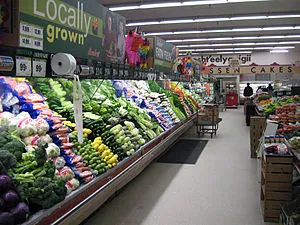
We all know the phrase “Garbage in, garbage out.” In other words, if what you’re putting in is bad, then the outcome will also be bad. This can be especially true when it comes to food and what we are putting into our bodies. If we love to enjoy junk food and eat it in large quantities, our health probably won’t be the best. Or, if we want to live long, healthy lives, then we have to make sure that we are getting good, nutritious foods in our diets. The choice is ultimately ours.
According to the Cleveland Clinic, one of the main players in determining our health is our guts. Our guts are responsible for so many of our body’s functions that keep it healthy and thriving. Our gut microbiome, which is all of the bacteria that live there to digest foods have to be kept healthy and within a correct balance to keep us feeling our best and to help prevent future health issues.
According to a review article, what you eat plays a big role in determining your gut health. Specifically, the article noted that eating high amounts of fat, fiber, cholesterol, emulsifiers, sodium, and simple carbs really takes a toll on your gut microbiome. Unfortunately, the typical Western diet that many of us eat is very high in many of these, such as saturated fat, sugar, sodium, simple carbos, and cholesterol.
Following and sticking to a healthier diet is the best way to improve and continue to support your gut’s health. While there are many different diet plans that you could choose from, simply just cutting back on junk foods and making healthful swaps in your current diet is also a step in the right direction! If you’re looking for more advice on healthy eating, be sure to check out the Fill Your Plate blog!
A Prescription for Produce
By Heide Kennedy, Arizona Farm Bureau Communications Intern
When you go to the doctor for a chronic illness, what often ends up happening is your doctor will prescribe you with a medication that is meant to help reduce the symptoms of or help to heal whatever the condition may be. While medication does do a lot of good, sometimes a diet that’s rich in fruits and vegetables can help to improve a patient’s condition as well. 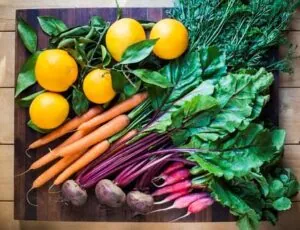
Registered dietician Mackenzie Sachs says that when a chronic illness such as high blood pressure or diabetes, her first recommendation isn’t usually medication, rather, its more fruit and vegetables in that patient’s diet. She says that the increased amounts of fiber, vitamins, and minerals that her patients receive through their diet after adding more fruits and vegetables has significantly improved their health.
Family nurse practitioner Brittany Coburn says, “Real food matters and increasing fruits and veggies can reverse some forms of diabetes, eliminate elevated cholesterol, and impact blood pressure in a positive way.” Sachs acknowledges that for some conditions, especially those that are irreversible, medication is still necessary. However, it never hurts to eat a healthy diet as well!
Did you know that Arizona agriculture grows a wide variety of produce throughout the year? Lots of it is easy to find at your local grocery store or farmers’ market! For resources on what produce is in season and where to find it, check out the Fill Your Plate website!
Gardening Provides Many Health Benefits
By Heide Kennedy, Arizona Farm Bureau Communications Intern
For as long as I can remember, my mom has always loved gardening. Any time that I get the chance, I love to go out and help her pick vegetables, water, and even pull weeds. There is just something about being outside in the sun doing some work and being rewarded with fresh fruits and veggies that is so relaxing and enjoyable. According to a recent study, gardening is actually very good for our health and in more ways than one.

Plus, fall and winter gardening in Arizona is actually a really fun time to garden, especially since the weather is so much nicer outside. Fill Your Plate’s seasonal charts let you know what grows best in the seasons.
The study which was published in The Lancet Planetary Health found that those who spent time gardening usually experienced the following health benefits:
- Reduced stress and anxiety levels
- Increased fiber intake due to greater vegetable consumption
- Increased physical activity
These can also contribute to reduced inflammation, improved immune system, improved metabolism, and also help to prevent obesity and manage weight. Not to mention, gardening also provides you with a bunch of fresh fruit and vegetables to enjoy and use in your cooking!
The University of Arizona Cooperative Extension has lots of great resources on gardening here in Arizona! They have a great planting guide that helps you know what to plant and when to plant it based on your region! Check it out here! Plus, Extension also hosts a Master Gardener program.
Interested in more gardening articles? Check out the Fill Your Plate blog!
Make Gradual Changes When It Comes to Diet and Exercise
By Heide Kennedy, Arizona Farm Bureau Communications Intern
We’ve all heard the phrase “Slow and steady wins the race!” While this is true in so many areas of life, it turns out that it is especially true regarding how we make changes to our diet and exercise habits. Quick, intense, and abrupt changes to what we eat or how much we exercise can result in bloating, gas, and bowel movement changes. Registered dietician Erin Judge says that the reason that making changes quickly causes these unpleasant symptoms is because by making these changes, you are putting stress on your body, which disrupts your body’s ability to convert food into energy. There are three specific things that we should change about our diets and exercise slowly to avoid any unpleasant effects.

The first has to do with how fast we change the foods that we include in our diets. Judge says that our gut microbiome is much like a muscle in that it needs to be slowly trained to digest more fiber-rich foods. Often when people decide to eat healthier, that means that they begin to add more vegetables to their diets, which are very high in fiber. Too much fiber all at once can cause gas, bloating, and bowel movement changes, so it is best to introduce it slowly.
Another dietary habit that is best introduced slowly is the frequency of when we eat. Judge says that it is best to eat three solid meals per day, as this allows your body that digestion period in-between meals to fully digest the previous meal and prepare for the next one to come.
Finally, the intensity of exercise has a lot to do with how well you digest food. When you amp up the intensity of your workouts suddenly, you’re asking a lot of yourself and your muscles, which places your whole body under a lot of stress. Judge says that while we don’t often connect the two, exercise and digestion do affect each other, so gradually increasing the intensity of a workout lessens the severity of that stress that you place on your body.
While it might be tempting to make drastic changes to our diets and exercise routines for the sake of seeing results faster, it isn’t always the best choice. Don’t be afraid to take it slow and make those positive changes one step at a time!
For more health-related articles, check out the Fill Your Plate blog!

